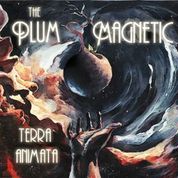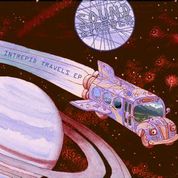What do you get when you put an electric 6-string banjo, a tabla, guitar, bass and drums together? The Plum Magnetic! And don’t you just love that name? Terms such as ‘world music’ and ‘fusion’ are bandied around a lot, but this group of musicians has embraced these musical areas with a passion on their album, Terra Animata (released 23rd February 2013).
They are a quartet from New Orleans and with a cooking pot full of different ingredients, just like New Orleans itself, this musical stew bubbles away, spitting out jazz, reggae, classical Indian music, country, Latin and more; each time you listen to a track, you get a different flavour. Only the most accomplished musicians could carry this off. In the hands of the less able, it could have been a mish-mash. Other instruments used include saxophone, trumpet, steel pan and cello.
The cover art for the album is infused with the spirit of William Blake and promises something epic and dramatic, but what we get is something far more gentle and subtle.
Comparisons to Bela Fleck, Talking Heads, The Grateful Dead and the Mahavishnu Orchestra will only take you a little way in knowing what to expect from these eight tracks. This music doesn’t hit you over the head; it kinda seeps into your brain like a raga, and the high level of musicianship keeps your interest. Four of the eight tracks are over nine minutes long, but they aren’t self-indulgent; it just takes that long for the complexities to develop. Every note on this album was probably carefully rehearsed, but sometimes it sounds like an impromptu jam.
Spring is the opening track, softly lapping the airwaves with echoing a-cappella, harmonic vocals. At just 25 seconds long, it’s a gentle introduction and unlike anything else heard on the album. Apart from Spring, I prefer the tracks without vocals, which I don’t think are of the same quality as the instrumentation and for the layers of sounds to carry me along undisturbed. Standout tracks for me are The Electric Jungle, with melodic banjo and cello (it’s not often you see those two instruments in the same sentence), Shesh Besh, one of the more straightforward rock tracks, led by melodic guitar and The Delicious, a gentle jazz, country and rock track with banjo and guitar weaving in and out. As for the closing title track, Terra Animata, it’s the most complicated, with some pleasing Latin rhythms and Tijuana horns, but overall, I think the vocals definitely detract from it.
Terra Animata is an ambitious project, and it’s good for fresh things to drip into your ears. Certainly, jazz on the banjo is a new and welcome sensation for me! The juxtaposition of different instruments is intriguing, and it’s interesting to try to deconstruct it. But for all the complexity going on, my favourite tracks are the ones where less is more.
https://theplummagnetic.bandcamp.com/album/terra-animata





